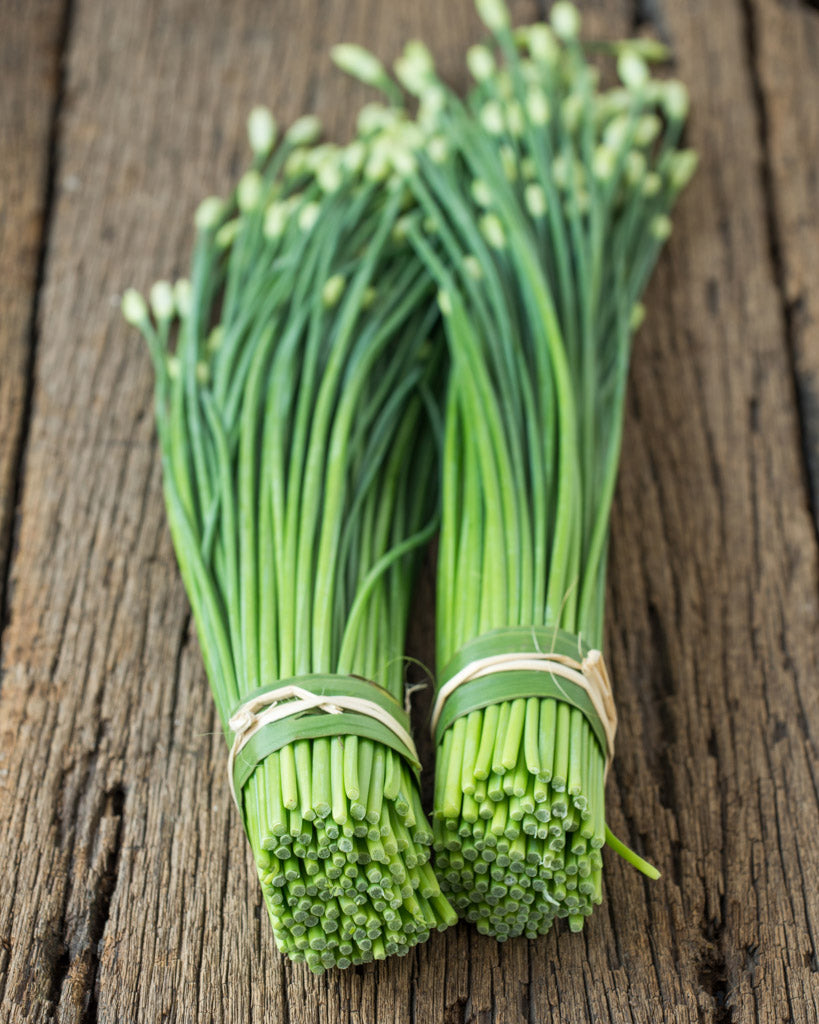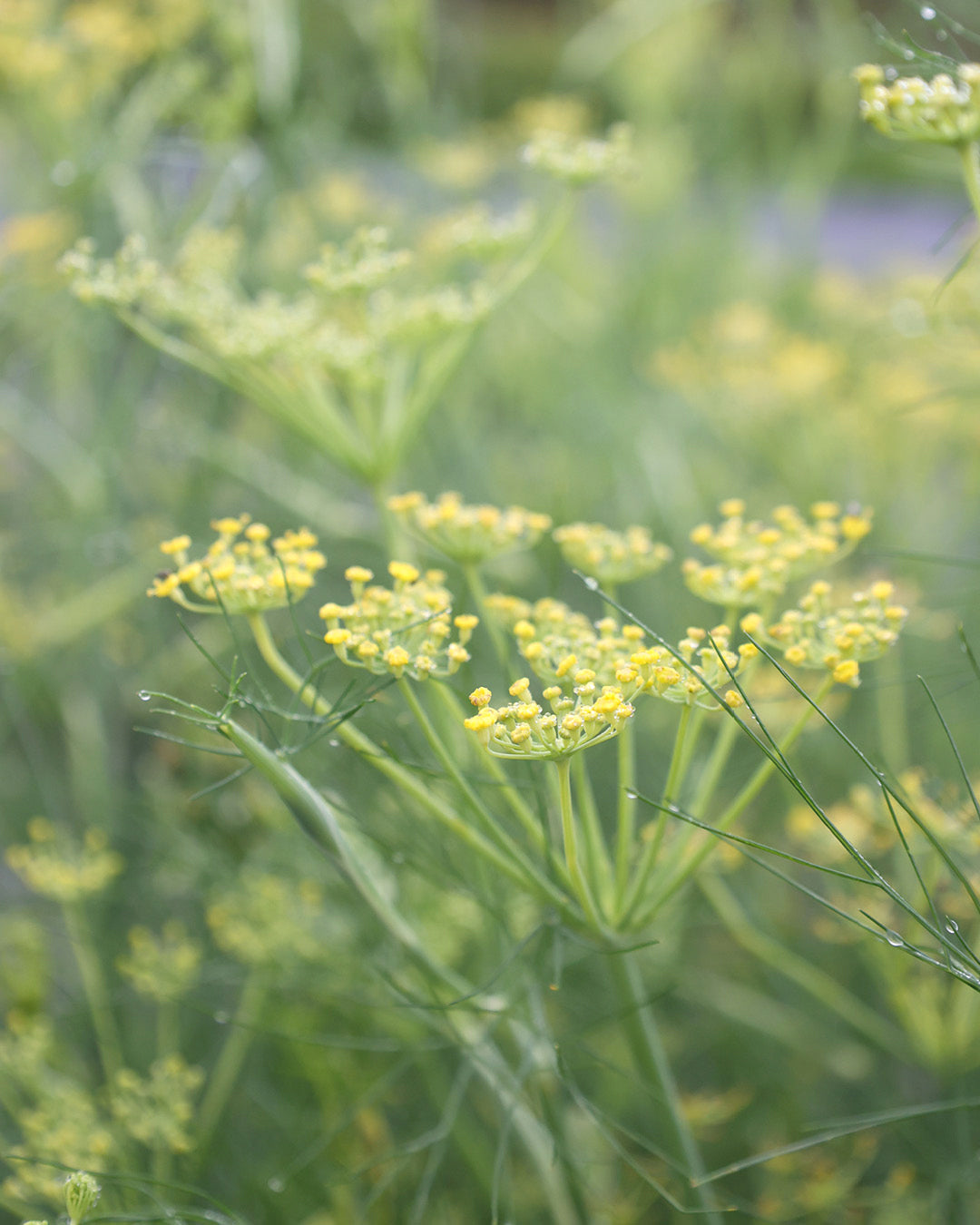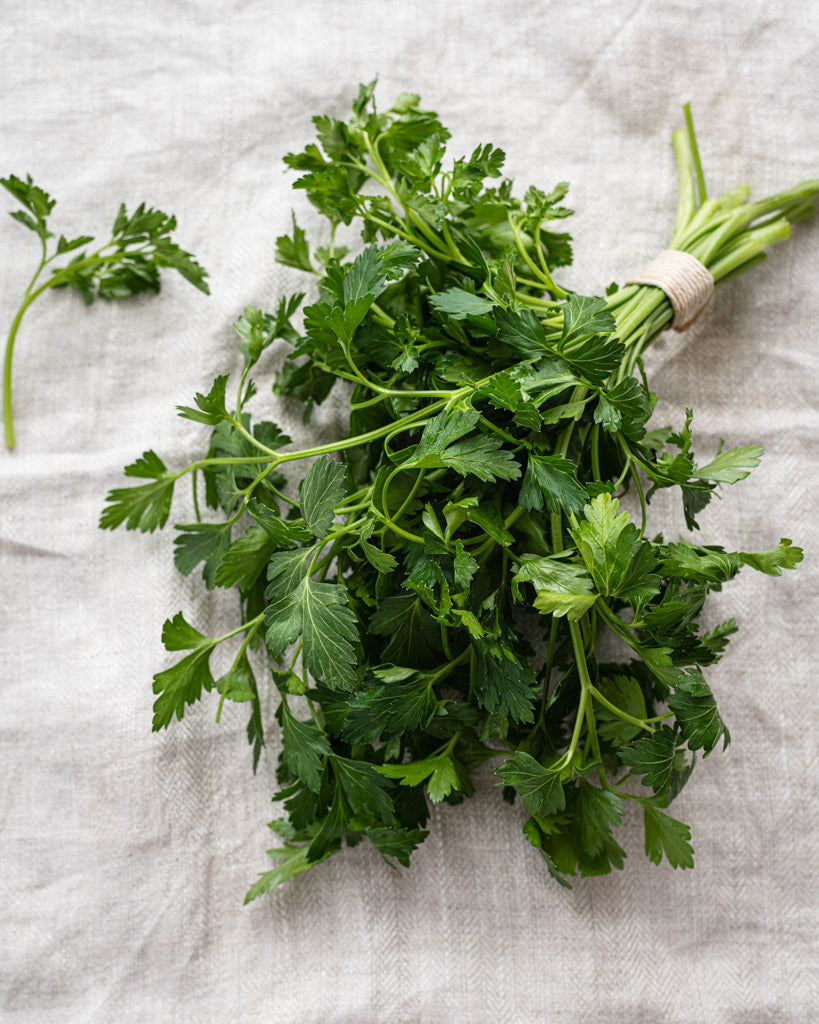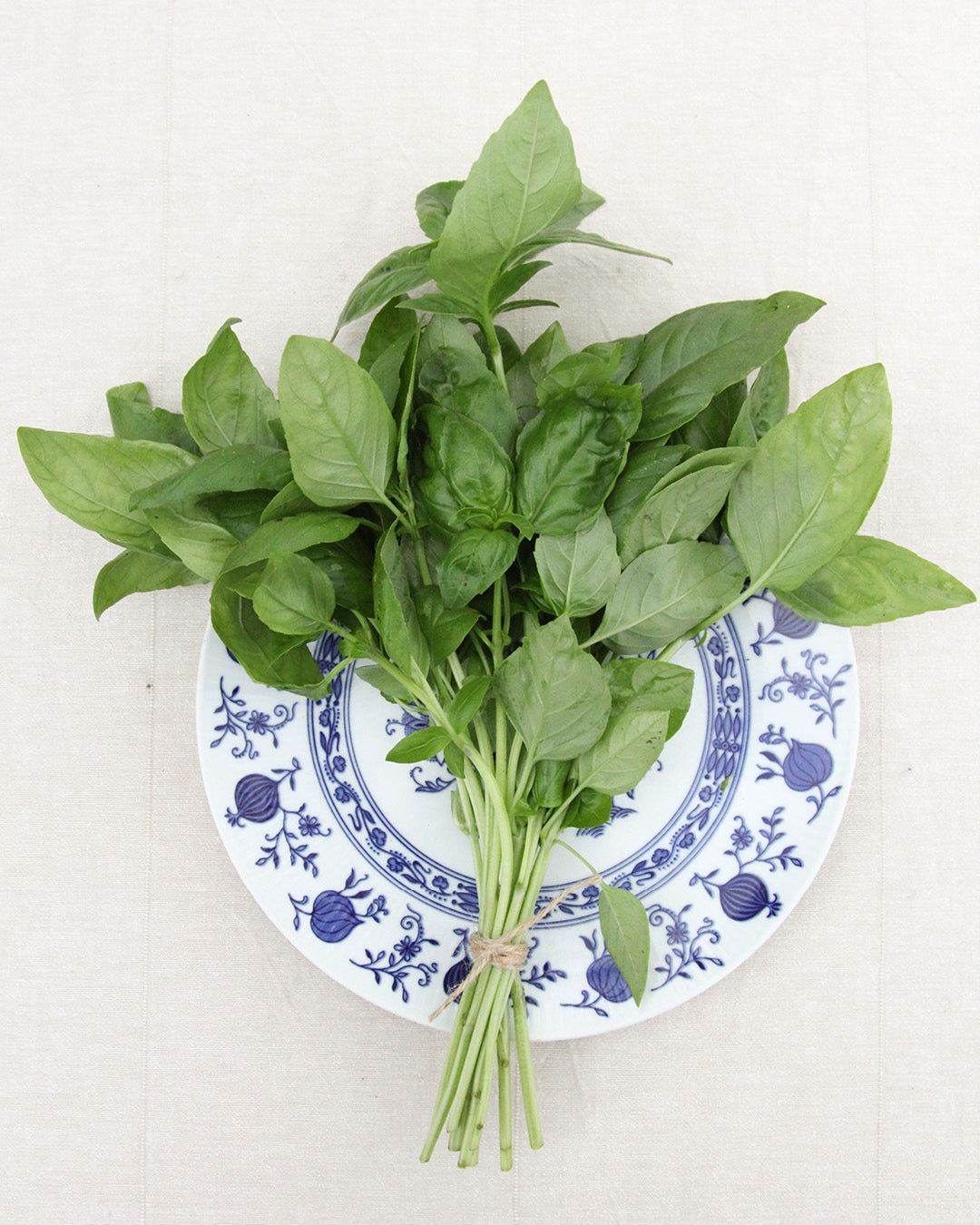chives
Garlic chives belong to the allium genus and the onion family. They offer the perfect solution and good news for all garlic lovers who don't want to give up their garlic but don't want to give up the unpleasant after-dinner smell. Their flavor is milder than garlic but stronger and more intense than chives.

Cultivation and propagation – what should you pay attention to?
Garlic chives (Allium tuberosum) prefer a sunny location but can cope with both poor and fertilized soil. In poor soil, they tend to stay small and develop into a pungent and tough plant. In the vegetable garden, however, they are densely foliaged with soft leaves and develop a milder flavor. Sow in trays or pots. Re-sow at intervals of a few weeks for best results. This perennial, summer-green plant does not produce bulbs, is hardy, and grows to a height of 30 cm. Sowing perennial garlic chives is from March to August. Because the herb germinates in low light, care must be taken to ensure the seeds are not covered with soil. Germination takes 14–18 days. Flowering occurs from July to September. Ornamental garlic therefore reaches its full potential in August. The plant can be propagated by dividing the clumps.
Harvesting and preserving – when, what and how best?
The plant, which thrives in any good garden soil, can be harvested year-round. Garlic chives should be used fresh. The fresher the better. Once cut, they will keep for another 2–3 days if stored in a glass of water. Stored garlic chives should not be dried, as this will cause the herb to lose its flavor. However, garlic chives can be frozen. Even better, however, is to make a pesto with the leftovers, as this preserves the flavor even better.
Use – What recommendations for herbal cooking?
A cross between garlic and chives, it has a more intense flavor than regular chives, but not as strong as garlic. This makes it more similar to wild garlic. The great advantage of garlic chives, however, is that they have the same flavor but without the unpleasant after-dinner smell. Used fresh, they not only enhance cheese bread but also tarte flambée, scrambled eggs, tomatoes, salads, quark dishes, and much more. Briefly blanched, they make a wonderful addition to Asian dishes. As with most fresh herbs, add them during the final cooking phase so the herb can fully develop its flavor. Along with the leek, the flowers are also edible. They taste completely different from the rest of the plant and develop a pleasantly sweet note.
Application – What healing or caring effect?
Garlic chives are used medicinally primarily for their antibacterial properties. They are said to strengthen the immune system and lower cholesterol levels. The herb promotes digestion and helps with constipation. This natural remedy is said to be beneficial for cancer prevention.
Botanical – What kind of plant is this?
Garlic chives grow to approximately 30 cm tall and have relatively thin, long, and flat leaves. They grow like chives, with whole leaves. The delicate, white, star-shaped flower heads grow between 7 and 8 cm in size and exude a delicate fragrance reminiscent of roses and violets. In the garden, garlic chives look great in both herb gardens and flowerbeds.
Interesting facts – What else is there to learn?
Garlic chives originate from East Asia. In addition to their medicinal and culinary properties, they repel insects wherever they grow and are even said to repel the common garden pest: moles.
TEXT: Swantje Holtmann
















